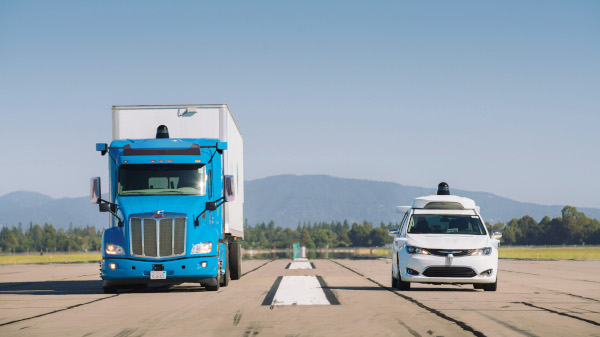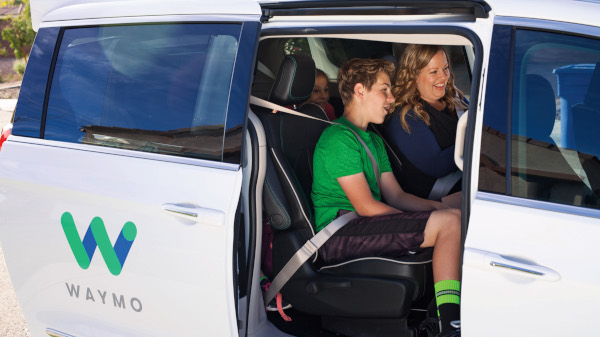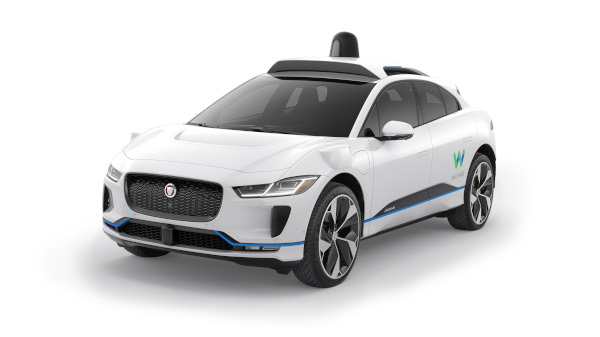As COO, Tekedra Mawakana oversees operations, business development, global public policy, marketing, communications and public affairs, and corporate social responsibility. She also is responsible for ensuring Waymo’s technology is commercialized. Prior to Waymo, Mawakana led global teams at eBay, Yahoo, AOL and Startec Global Communications. She started her career at the DC-based law firm Steptoe & Johnson LLP and received her JD from Columbia Law School, and her BA with honors from Trinity College.
Mawakana is also an angel investor, serves on CTA’s Board of Industry Leaders and is a member of the Executive Committee on the Board of Saving Promise. Previously, she served as the chairman of the Board of the Internet Association, and on the Global Network Initiative’s Board of Directors. She shared her insights on self-driving technology with i3.
Since our founding in 2009, we have self-driven over 20 million miles on public roads and over 15 billion miles in simulation. In that time, we’ve made a series of evolutionary breakthroughs that have helped progress our technology into a safe and experienced driver. As every step in this process advances our tech, every step matters; this problem is incremental and no single moment has defined the success of our driver. One critical strength however is our use of simulation technology, which enables our systems to keep learning even when our fleet is not rolling. At this point, just one day in simulation is equivalent to driving for more than 100 years in the real world, helping us dramatically expand the scale and complexity of our experienced Waymo Driver.

Our fleet consists of 600 self-driving Chrysler Pacifica Minivans, which we use for testing and our commercial service, Waymo One, in Phoenix, Arizona, and our next self-driving vehicle, the Jaguar I-Pace. We also have a fleet of self-driving Class-8 trucks, all equipped with our custom-built suite of sensors.
While we’ve yet to realize the long-term effects of this pandemic, we can imagine that society’s view on sharing space with a human driver may forever change. For Waymo, removing the human driver holds great promise for making our roads safer, helping people stay healthy, and enabling both people and things to get where they need to go. As the only self-driving tech company to have a commercial ride-hailing service and giving fully driverless rides, our riders know our entire fleet is sanitized and maintained by Waymo and they can depend on a clean, consistent experience. In partnership with AutoNation, we’ll ensure that our vehicles continue to be sanitized and ready when we begin offering rides again to the public. During this time, we’re also leveraging our fleet to facilitate charitable donations to a half dozen different charities in the Metro-Phoenix area to deliver PPE, food and school supplies to people and organizations in need.
Data is critical to building safe, reliable and trusted services — regardless of what the Waymo Driver is moving around. We’ve been fortunate to leverage expertise and infrastructure at Google and across Alphabet.
Ultimately, the most critical element of the consumer experience in a self-driving vehicle is safety, and sophisticated, high quality data is crucial to make that possible. It’s also important that we make parts of our approach visible to consumers. A rider in a Waymo One vehicle might not see the millions of lines of code that underpin the Waymo Driver but they do see parts of what the vehicle sees. As you ride in the backseat of a Pacifica or an i-Pace, being able to see the 360-degree view of what the vehicle sees around you — from pedestrians and cyclists to upcoming intersections — is crucial to building comfort and trust.

At Waymo, we’re building the world’s most experienced driver. We’ve been at this since 2009, and we’ve driven more than 20 million miles on roads. Today, we remain the only self-driving tech company to have a commercial, public, autonomous ride-hailing service and to have a fleet of fully driverless cars without anyone behind the wheel.
Our fifth generation Waymo Driver, which incorporates custom-built sensors — including LiDAR, camera and radar — uses a comprehensive view of its surroundings and a detailed understanding of its environment to accurately reason about its next move. No one type of sensor on its own can provide that level of detail in all operating conditions, so we've developed a single integrated system to give our Driver a comprehensive view of the world to safely navigate complex environments.
For example, our in-house custom designed LiDAR are one of our most powerful sensors, painting a 3D picture of its surroundings, allowing us to measure the size and distance of objects around our vehicle, whether they're up close or 300 meters away. LiDAR data can be used to identify objects driving into the sun on the brightest days as well as on moonless nights.
Our access to Alphabet infrastructure and our investments in AI and ML give us a powerful advantage here, ensuring that we can consistently improve the capabilities of the Waymo Driver efficiently and rapidly.
Self-driving is one of the most challenging problems to solve in our generation and we view it almost like running an ultra-marathon.Takedra Mawakana Chief Operating Officer, Waymo
In the U.S. alone, there are three million people over 40 who are blind or have low vision. Additionally, 79% of seniors 65 and over live in car-dependent communities. Autonomous vehicles have the potential to reshape the transportation landscape for seniors and people with disabilities, especially those individuals who cannot get a driver's license today. Self-driving technology has the potential to provide millions of people with accessibility and independence, creating new mobility options while saving lives.
To fully realize this potential, we've been working with and listening to the disability community and advocates for seniors to learn about the unique needs of different riders. Through our Let's Talk Self-Driving partners like the Foundation for Senior Living and the Foundation for Blind Children, we've made progress towards several critical usability developments, like accessible mobile app and support, audio and visual cues and tools, and braille labels.

AI plays a crucial role in nearly every part of our self-driving system, helping our cars make sense of the world they see around them, predict how others will behave, and decide our next best move. With machine learning, we can navigate nuanced and difficult situations; maneuvering construction zones, yielding to emergency vehicles, and giving room to cars that are parallel parked. We can do this because we’ve trained our ML models, using lots of different examples from over 20 million miles we’ve driven on public roads in more than 25 U.S. cities. With this robust training and testing cycle, we can rapidly improve our ML models, and quickly deploy the latest nets on our self-driving cars.
We’ve been working on self-driving technology for more than 10 years now and we have the benefit of that experience to know that this technology will come to the world step by step. Self-driving technology is so complex and we’ve gotten to where we are today because of advances in diverse fields from sensing in hardware, to machine learning. Many engineers see self-driving as the most difficult technical challenge in robotics and machine learning today. As we move forward, we uncover layers of complexity along the way — the more you know, the more you have to learn.
Over a decade in, our team is focused on solving what we call the long-tail challenges. Back in 2009 we drove our first 10, 100 mile challenge routes in California fully autonomously — now 11 years later in 2020, we’re working to solve for those very rare instances that a human driver may never experience in a lifetime of driving. That’s why we’ve been taking a gradual approach to introduce this technology to the world.
The most critical misperception is that fully self-driving vehicles already exist for consumer purchase. Advanced driver assistance systems and active cruise control products have been available for years, yet neither represents fully self-driving capabilities. Being able to drive along a curving freeway 10 meters from the car in front is not a technological feat — doing the same in a hailstorm is. Real self-driving systems will take far longer to come to maturity without the crutch of a human in the driving seat, they need to be able to safely navigate through a myriad of unpredictable road situations. That might range from snowy weather, animals on the road, aggressive drivers or intense traffic. A true self-driving system is one that has mastered every edge case, not simply tackling the simplest possible driving situations.
Self-driving is one of the most challenging problems to solve in our generation and we view it almost like running an ultra-marathon. Complex problems take time, and we’ve already been at this for 11+ years. But we’re making promising steps. Members of the public in Phoenix, are using our driverless cars with no human driver behind the wheel with the Waymo app, as part of Waymo One, our ride-hailing service.
Since launching our early rider program in 2017, we’ve served over 100,000 trips to riders in the Phoenix area, and have over 1500 monthly active riders in Waymo One since launching in December 2018. We remain the only self-driving tech company to have a commercial, public, autonomous ride-hailing service.
By focusing on the driver, we’re building what you could imagine as an operating system of mobility — a safe, robust intelligent system designed to help many kinds of vehicles navigate from point A to B safely. That will likely involve personal vehicles, ride-hailing fleets and vehicles moving goods and freight. We have multiple paths to market and multiple ways to have an impact making transportation safer and more efficient.

I3, the flagship magazine from the Consumer Technology Association (CTA)®, focuses on innovation in technology, policy and business as well as the entrepreneurs, industry leaders and startups that grow the consumer technology industry. Subscriptions to i3 are available free to qualified participants in the consumer electronics industry.